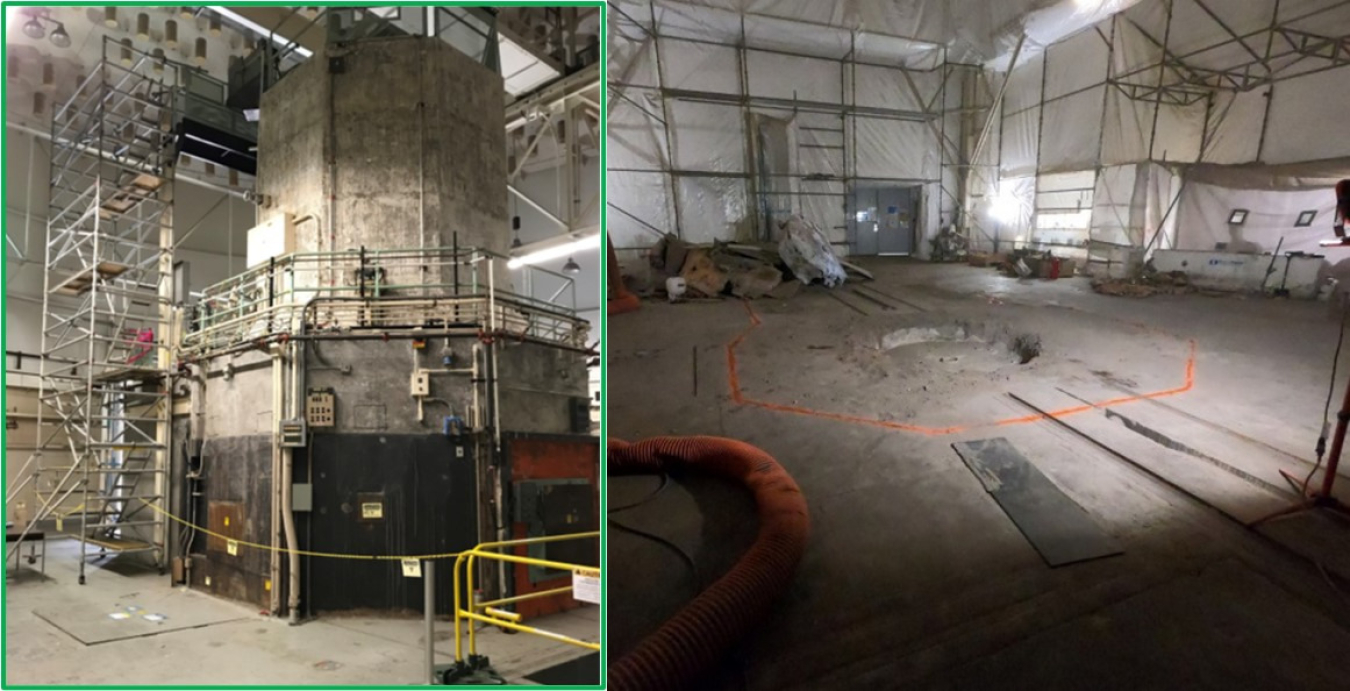Livermore, Calif. - EM partnered with Lawrence Livermore National Laboratory (LLNL) and the U.S. Army Corp of Engineers (USACE) to complete the recent demolition of a building and removal of a reactor to make room for new facilities on the lab’s 1-square-mile footprint.
With its small footprint, the lab must maximize all available space by demolishing buildings that have outlived their purpose. This includes Buildings B175 and B280, two high risk excess contaminated facilities onsite.
B175, which crews demolished to slab, played a part in LLNL’s Uranium Atomic Vapor Laser Isotope Separation program, which used an electron beam to vaporize uranium to test ion extraction and material handling subsystems.
“The B175 effort required significant internal integration within LLNL to successfully demolish the building and help refine processes which will be used for future demolition activities,” said Kevin Bazzell, EM’s federal project director at LLNL.
Part of the B175 building waste included low-level and mixed hazardous waste. Workers transported more than 30 shipping containers of waste to an out-of-state disposal facility.

Before and after views of the project to remove the Livermore Pool Type Reactor from inside Building 280 at Lawrence Livermore National Laboratory.
B280 housed the Livermore Pool Type Reactor, a neutron-producing machine used for fundamental research and to measure and calibrate instruments. Later, it was used for trace-element measurements, radiation-damage studies and researching shorter-lived fission products.
USACE, in an interagency agreement with EM, completed removal of the reactor from within the building. The reactor demolition work included characterizing and demolishing the reactor bioshield, reactor internals and support equipment.
“The reactor removal required a colossal amount of teamwork and integration among EM, USACE and LLNL to demolish it. Coordinating the teams, their schedules and their individual duties was challenging, but everyone worked together to get it done,” Bazzell said.
Razing the building and its slab will follow. LLNL plans to use the site for a parking structure to support ongoing mission expansion.
“The work at B280 and B175 was a joint EM and LLNL success,” said Bazzell. “The demolition and cleanup at two of the higher risk buildings onsite meant constant communication of schedules, safety protocols and work execution. I’m proud of how our teams collaborated to get the job done.”
EM lists four big accomplishments at Livermore during 2021 and 2022 so far:
- Building 175 demolition;
- Building 280 Livermore Pool Type Reactor demolition;
- Characterization of Building 251, known as the Heavy Element Building;
- Awarding a task order to contractor APTIM to demolish Building 251.
EM will continue to partner with LLNL on the demolition of up to 13 facilities at the laboratory site through fiscal year 2029.